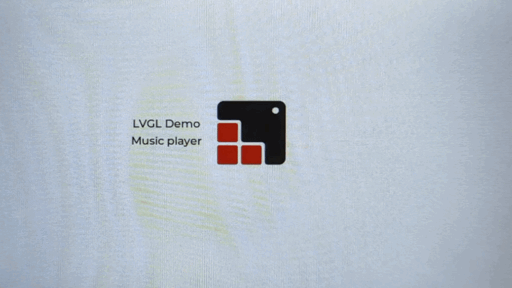GUI Optimization Summary
This document primarily summarizes how to optimize GUI effects.
If you are developing based on LVGL, it is recommended to use the esp_lvgl_adapter component to optimize the GUI effect. This component has deeply optimized screen tearing and frame rate, and seamlessly integrated advanced features such as image decoding, FreeType font rendering, and Dummy Draw.
LVGL Frame Rate Optimization Configuration
LVGL Frame Rate Optimization Configuration
It is recommended to use the esp_lvgl_adapter component to optimize the frame rate of LVGL.
Reference example: lvgl_common_demo
LVGL Image Too Large, Insufficient Memory
If the .c file exported by LVGL (encoding the texture as a C array) is too large, causing insufficient Flash space, the following alternative solutions can be adopted:
Method |
Flash Occupancy |
Loading Method |
Performance & Advantages |
|---|---|---|---|
.c file |
High (all original encoding) |
Embedded at compile time |
Fast loading, but large resource occupancy |
JPEG/PNG + FS |
Medium, more optimal |
Loaded from the file system (SPIFFS, FATFS) at runtime |
Saves Flash, rendering efficiency affected by decoding capability |
MMAP + LVGL decoding |
Low (compressed binary form) |
Load resources in mmap mode |
High Flash utilization, good decoding efficiency |
Optimization Suggestions
It is recommended to use the esp_lv_fs and esp_lv_decoder features of the esp_lvgl_adapter component to optimize decoding efficiency and manage LVGL’s image resources.
Reference example: lvgl_decode_image
LVGL UI Screen Tearing
Tearing Phenomenon

Screen tearing effect diagram
It is recommended to use the esp_lvgl_adapter component to optimize screen tearing issues.
Reference optimization examples:
Random black lines in the image
Phenomenon: When ESP32-P4 uses the hardware JPEG decoder to decode images, random black lines appear.

Cause: Cache is not synchronized – CPU reads data to cache, hardware JPEG decoder reads data from psram. Due to the cache not being synchronized in time, the data read by the hardware is inconsistent with what the CPU sees, resulting in black lines.
Solution:
Key 1: Input data synchronization – Before hardware decoding, ensure that the original JPEG data has been written back to PSRAM from the cache:
safe_cache_sync(rgb_data, jpeg_size, ESP_CACHE_MSYNC_FLAG_DIR_M2C)Key 2: Output buffer preparation – Clear old cache data to prevent the hardware from reading outdated pixels:
safe_cache_sync(rgb565_ptr, rgb_output_size, ESP_CACHE_MSYNC_FLAG_DIR_M2C | ESP_CACHE_MSYNC_FLAG_INVALIDATE)Hardware decoding – Call the decoder interface:
jpeg_decoder_process(jpgd_handle, &rgb_cfg, ...);
Key 3: Result synchronization – After decoding is complete, write the new pixels in PSRAM back to the cache for CPU access:
safe_cache_sync(rgb565_ptr, rgb_output_size, ESP_CACHE_MSYNC_FLAG_DIR_C2M)